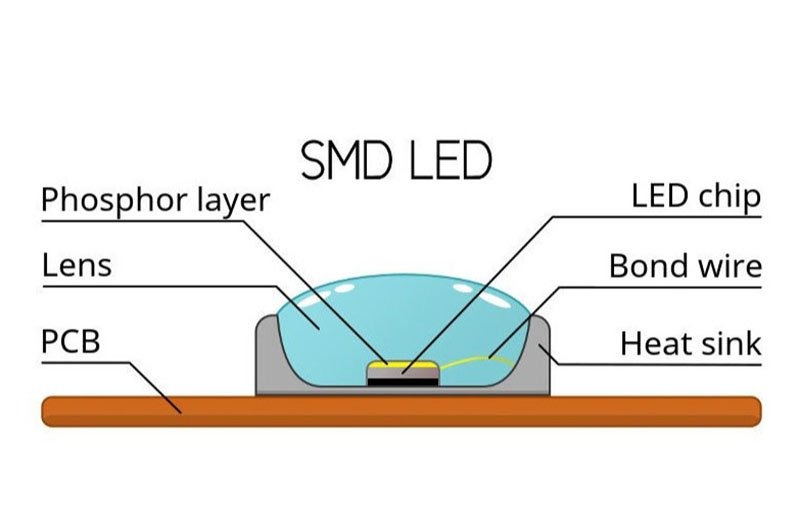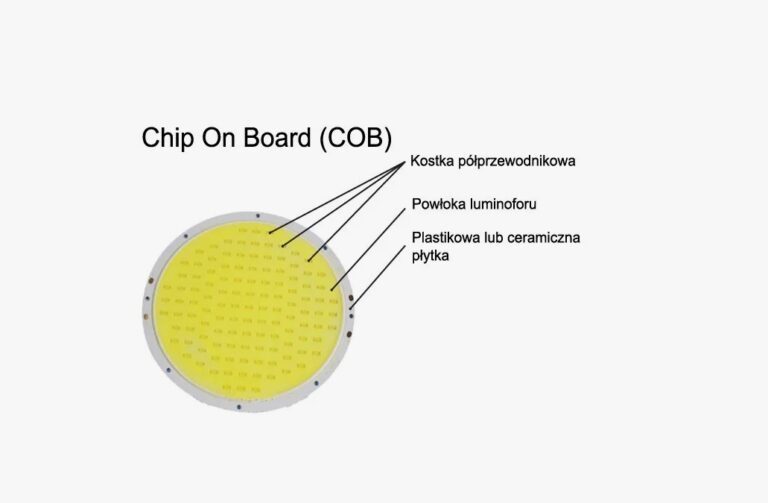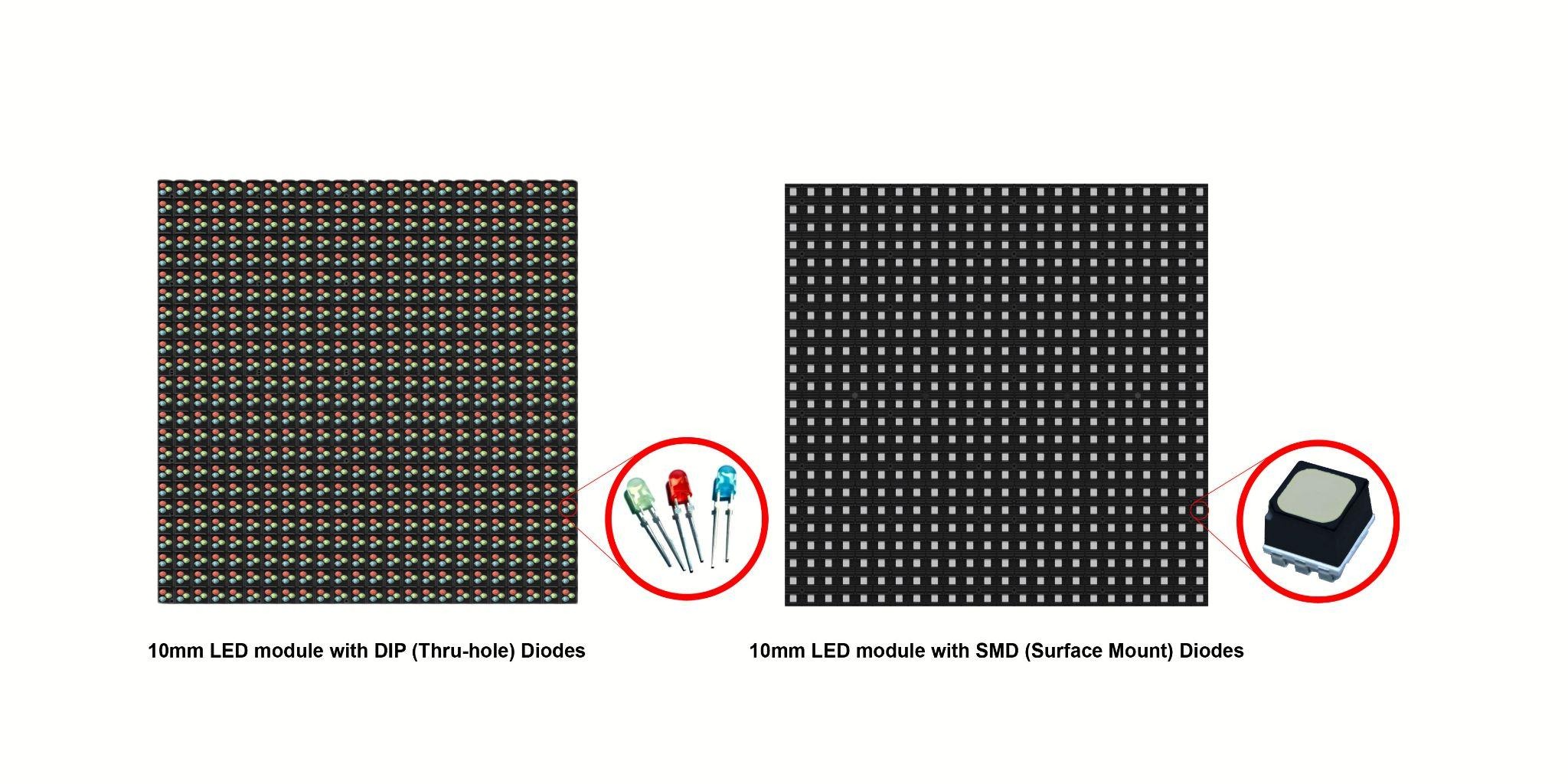
People often get confused about the processes of SMD, COB, and DIP in LED displays. In this article, RTLED will explain the definitions and characteristics of these three in detail.
1. What is SMD LED?
SMD (Surface – Mounted Device) is a packaging technology that directly attaches the LED chip to the surface of the circuit board. It is commonly used for high – resolution indoor LED screens. Its advantage lies in providing a higher pixel density and a more uniform lighting effect, making it suitable for environments with high requirements for color accuracy and display effects, such as shopping malls, conference rooms, and stages.
Due to its miniaturization, SMD technology generally requires higher requirements for moisture and dust protection, which may pose challenges in humid or dusty environments. Nevertheless, the wide application of SMD technology dominates in indoor scenarios, and its low power consumption and good display effect make it an ideal choice.

2. What does COB means?
COB (Chip on Board) is a technology that directly solders the LED chip onto the PCB circuit board, providing excellent brightness output and heat dissipation performance. COB technology reduces the lead wires and packaging materials of traditional LED packaging, thus achieving a higher power density and better heat dissipation effect. COB LED panels is suitable for large – size, high – brightness outdoor display screens.
The strong heat dissipation ability of this technology is especially suitable for extreme environments, such as outdoor billboards or stage LED screens, and can effectively extend the service life of the LED display. Although the cost of COB technology is relatively high, its high brightness and strong weather resistance make it the first choice for outdoor large LED screens.

3. What does DIP mean?
DIP (Dual – In – line Package) is a traditional LED packaging technology. It installs the LED chip on the circuit board through pins and is usually used for outdoor LED screens and occasions for long – distance viewing. The main advantages of DIP technology are its high brightness output and durability, which can withstand extreme weather conditions, such as heavy rain, high temperature, and strong winds.
However, due to the low pixel density and poor resolution of DIP technology, it is not suitable for occasions that require detailed display. DIP is usually applied to large – scale advertisements, stadiums, and environments for long – distance viewing, and is suitable for places that need a strong visual impact.

4. Which is better?
First of all, resolution is a key factor affecting the effect of the LED screen. If users need a high – definition and high – pixel – density display effect, especially in indoor environments, SMD technology is undoubtedly the best choice. It can provide a delicate display effect and accurate colors, and is also suitable for occasions with high – resolution requirements, such as shopping malls, conference rooms, and stage displays. For applications that require a lower resolution, such as outdoor advertisements for long – distance viewing, DIP technology, due to its large packaging and low pixel density, may not be suitable for fine display, but it can provide sufficient brightness for long – distance viewing.
In terms of brightness and heat dissipation, COB technology is generally superior to SMD and DIP, especially in environments that require high – brightness output, such as giant outdoor LED screens or stage background LED screens. The design of COB makes its heat dissipation performance more excellent, enabling it to work stably for a long time and ensuring the display quality even in high – temperature or harsh environments. In contrast, DIP technology also has a high brightness, suitable for long – distance visual needs, but its heat dissipation effect is not as good as that of COB.
Regarding durability, both DIP and COB have strong resistance to harsh environments, especially suitable for outdoor environments. Due to its relatively traditional design, DIP can maintain a long service life under harsh conditions such as sandstorms and heavy rain. COB is also very durable due to its advanced heat dissipation technology, but the cost is relatively high. SMD is mainly applied to indoor environments. Although it has certain advantages in moisture and dust prevention, its performance in extreme weather is not as good as that of DIP and COB.
Cost is a key concern for many users. Generally speaking, DIP technology is the most cost – effective choice, suitable for large – scale outdoor display screens with limited budgets and low requirements for resolution. SMD technology is slightly higher in cost but can provide a more refined display effect, so it is widely used in high – end indoor display projects. And COB technology, due to its higher performance and strong heat dissipation ability, is usually the most expensive choice, but for large – scale outdoor screens that require ultra – high brightness and stable performance, it is undoubtedly the best investment.
Finally, in the current market, SMD and COB technologies are the most mainstream choices. SMD technology dominates in the field of indoor high – resolution displays because it provides high pixel density, low power consumption, and good display effects, and is widely used in shopping malls, conference rooms, and stages. COB technology, with its superior heat dissipation performance and high – brightness performance, has become the first choice for large – scale outdoor advertising screens and high – brightness displays, especially suitable for outdoor environments that require long – term stable operation. In contrast, DIP technology has gradually been phased out, especially in applications that require high – resolution and fine display, where DIP is no longer suitable, so it is no longer recommended.
Post time: Feb-10-2025

